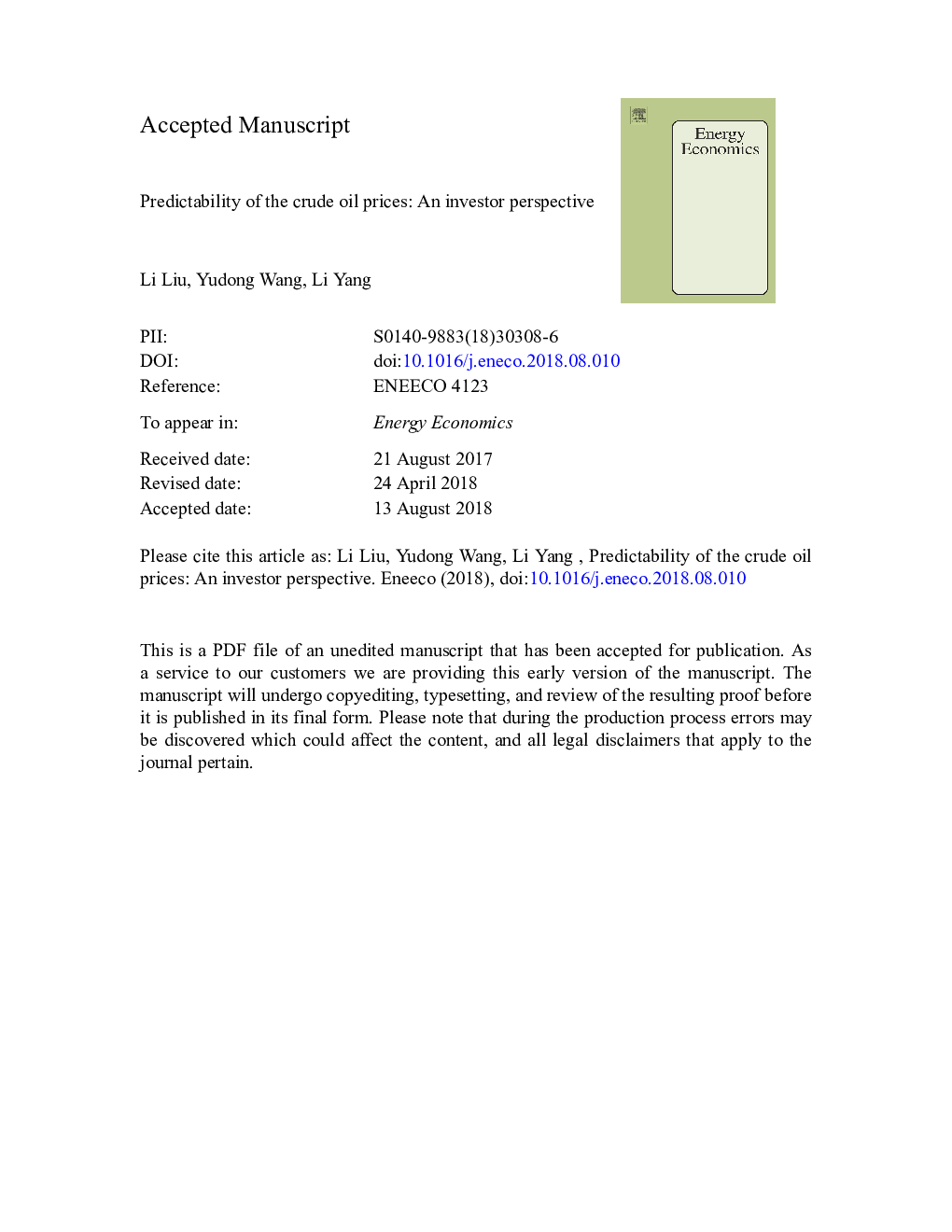| کد مقاله | کد نشریه | سال انتشار | مقاله انگلیسی | نسخه تمام متن |
|---|---|---|---|---|
| 10134524 | 1645626 | 2018 | 57 صفحه PDF | دانلود رایگان |
عنوان انگلیسی مقاله ISI
Predictability of crude oil prices: An investor perspective
ترجمه فارسی عنوان
پیش بینی قیمت نفت خام: چشم انداز سرمایه گذار
دانلود مقاله + سفارش ترجمه
دانلود مقاله ISI انگلیسی
رایگان برای ایرانیان
کلمات کلیدی
ترجمه چکیده
ما پیش بینی می کنیم که تراکم بازده آتی نفت خام با استفاده از متغیرهای اقتصاد کلان و شاخص های فنی در طول ژانویه 1986 تا دسامبر 2015، متغیرهای کلیدی، مبانی بازار نفت را در بر بگیرند، در حالی که شاخص های فنی بر اساس قوانین معمول حرکتی محبوب ساخته می شوند. برای ایجاد پیش بینی های تراکم، چندین استراتژی ترکیبی از هر دو مدل پارامترهای ثابت و متغیر متغیر استفاده می شود. نتایج خارج از نمونه نشان می دهد که اهمیت آماری و اقتصادی پیش بینی شده است. ترکیبی از پیش بینی و شاخص های فنی، پیش بینی تراکم دقیق تر نسبت به ترکیبی از متغیرهای کلان تولید می کند. شاخص های فنی نیز از لحاظ نسبت شارپ و بازده معادل اطمینان معقول تر از سرمایه گذاران ریسک پذیر هستند که به دنبال ایجاد اختلاف بین ریسک و بازگشت در بازار نفت هستند. شاخص های فنی می توانند در طول دوره رشد گسترش بازده چگالی نفت را بهتر پیش بینی کنند، در حالی که متغیرهای اقتصاد کلان در طول دوره رکود اقتصادی دقیق تر از پیش بینی های پیش بینی شده ارائه می دهند و اطلاعات مکمل در مورد چرخه کسب و کار را فراهم می کنند.
موضوعات مرتبط
مهندسی و علوم پایه
مهندسی انرژی
انرژی (عمومی)
چکیده انگلیسی
We forecast the density of crude oil futures returns using both macroeconomic variables and technical indicators over the period January 1986 through December 2015. The macro variables reflect oil market fundamentals while the technical indicators are constructed based on the popular moving average rules. Several combination strategies over both constant and time-varying parameter models are employed to generate density forecasts. The out-of-sample result shows statistical and economic significance of the predictability. Forecast combination over technical indicators generates more accurate density forecasts than the combination over macro variables. Technical indicators also perform better in terms of Sharpe ratio and certainty equivalent return for risk-averse investors who seek a trade-off between risk and return in the oil market. Technical indicators can better predict oil return density during the expansion period, while macroeconomic variables generate more accurate out-of-sample forecasts during the economic recession period, providing complementary information over the business cycle.
ناشر
Database: Elsevier - ScienceDirect (ساینس دایرکت)
Journal: Energy Economics - Volume 75, September 2018, Pages 193-205
Journal: Energy Economics - Volume 75, September 2018, Pages 193-205
نویسندگان
Li Liu, Yudong Wang, Li Yang,
